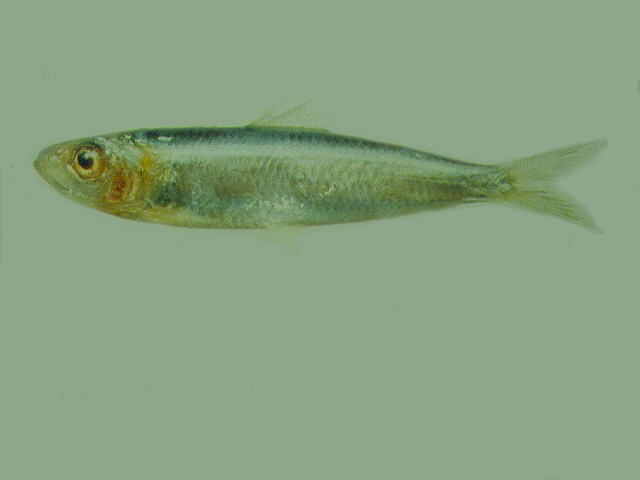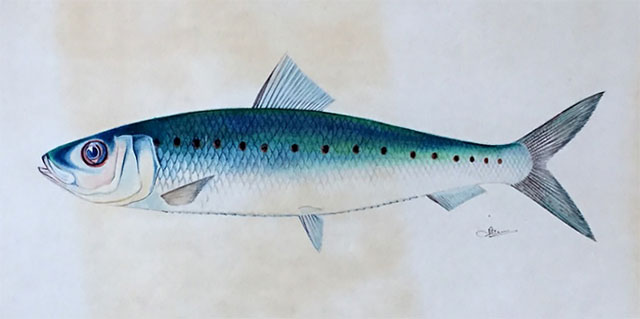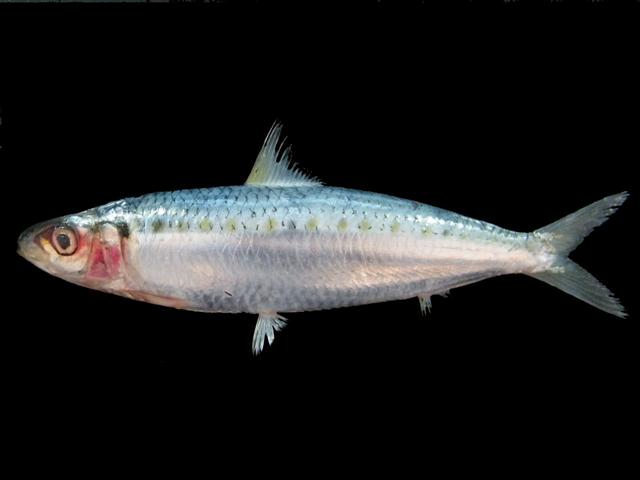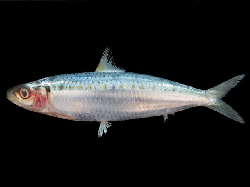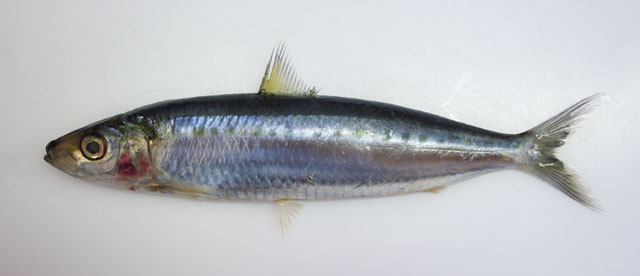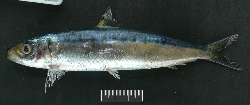Amblygaster sirm (Walbaum, 1792)
Description
Dorsal spines (total): 0; Dorsal soft rays (total): 13 - 21; Anal spines: 0; Anal soft rays: 12 - 23. Diagnosis: Body slender, belly rather rounded, scutes not prominent (Ref. 188). It is distinguished from Amblygaster clupeoides and A. leiogaster by the presence of a series of 10-20 gold, in life, or black, on preservation, spots down the flank, but sometimes missing; also, lower gillrakers 33-43, while 26-33 in the other two species (Ref. 188). Sardinops species are also round-bodied and have spots on the flanks, but possess bony radiating striae on the gill cover; round-bodied Sardinella species have one unbranched and 8 branched pelvic finrays while Amblygaster sirm has one unbranched and 7 branched pelvic finrays, and more than 100 gillrakers are present in Sardinella species, also no spots (Ref. 188). Last 2 anal-fin rays enlarged (Ref. 117228).
Common Names
Taxonomic Hierarchy
Kingdom: Animalia
Phylum: Chordata
Class: Teleostei
Order: Clupeiformes
Family: Dorosomatidae
Genus: Amblygaster
Species: Amblygaster sirm (Walbaum, 1792)
Climate Zone
Location
Biology
A pelagic, schooling species occurring in coastal waters and lagoons (Ref. 188, 53568), at depths of 1-75m (Ref. 82332). In Panggang Island, Indonesia it was recorded in temperatures of 28.5-29.8°C and salinities of 31.6-32.3 ppt (Ref. 823). It feeds mainly on copepods, nauplii and zoea larvae, larval bivalves and gastropods, as well as Peridinium and Ceratium; juveniles also on phytoplankton (Ref. 188). Used as bait in the tuna fishery.
Habitat
brackish
